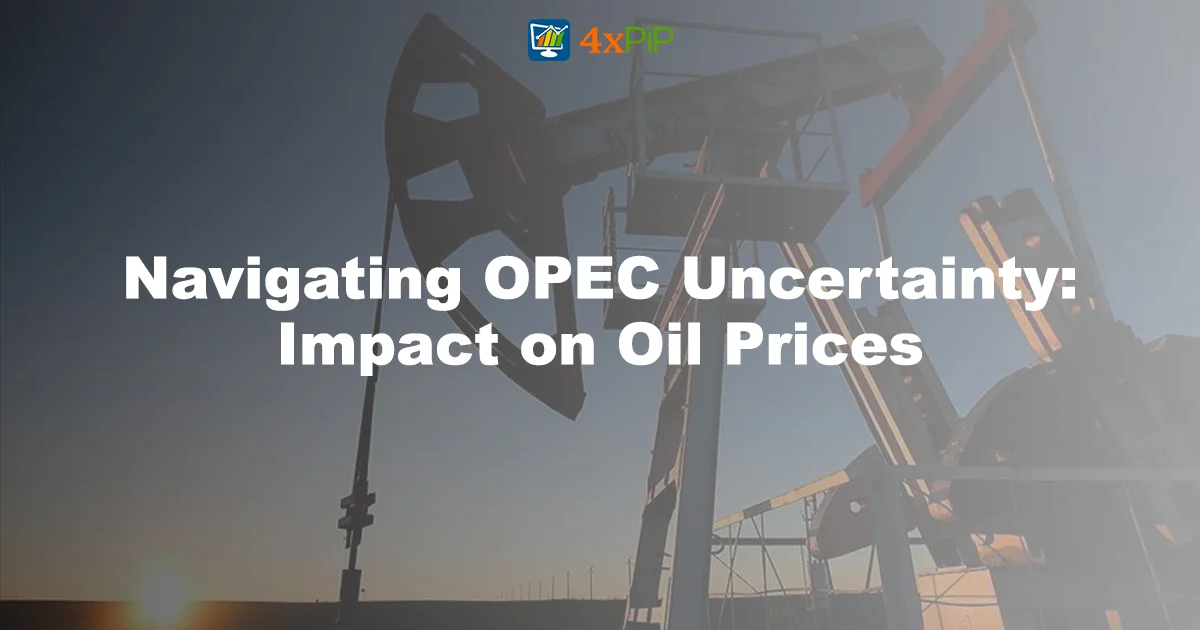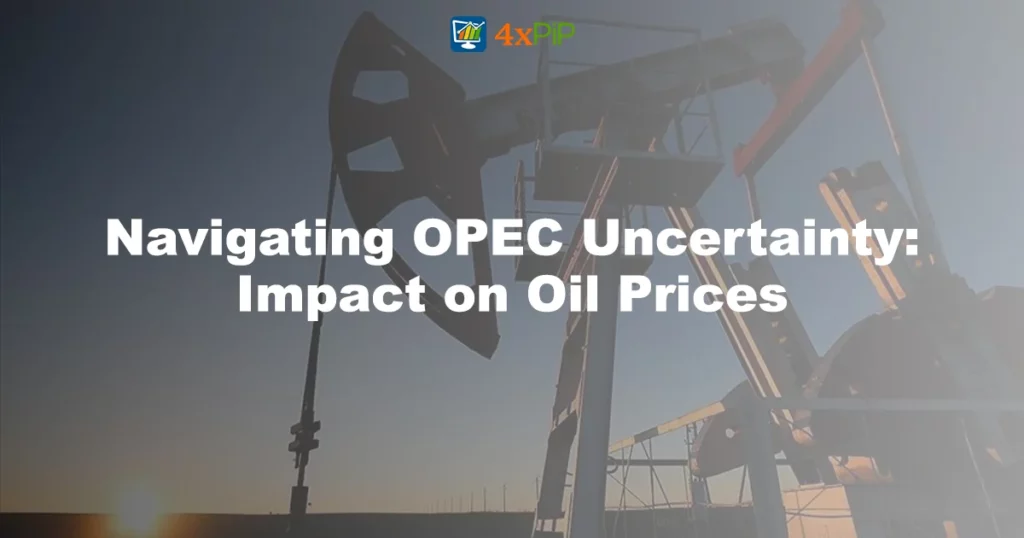In the intricate world of oil trading, uncertainties surrounding OPEC+ decisions can send ripples through global markets. As oil prices experience fluctuations, understanding the dynamics of OPEC+ production cuts and their broader economic implications becomes paramount for investors. Join us in exploring the current landscape and potential impacts on oil prices. For expert insights and guidance tailored to your trading needs, reach out to 4xPip at [email protected].
OPEC+ Production Cuts Take Center Stage:
The ongoing uncertainty surrounding the OPEC+ alliance is responsible for the recent dip in oil prices. The market became ambiguous when the eagerly awaited meeting, initially scheduled for November 26, was delayed to November 30. Reports suggesting internal disputes over planned production cuts contributed to the apprehension. Key players like Saudi Arabia and Russia, who played pivotal roles in OPEC+ efforts to curb supply this year, are expected to discuss the extension or deepening of supply reductions. However, conflicting plans by certain OPEC+ members, such as some African nations aiming to increase production, complicate the path forward. The potential rise in supply, coupled with record U.S. production and growing Chinese stockpiles, prompts expectations of further production cuts from Saudi Arabia and Russia to stabilize the market heading into 2024.
Inflation and Business Activity Readings on Tap:
Adding to the intricacy, oil markets are navigating a series of vital economic readings. Eurozone inflation data, set to be released on Thursday, holds particular significance as the bloc teeters on the edge of a technical recession, raising concerns about crude demand. Simultaneously, Chinese Purchasing Managers Index data, also due on Thursday, will provide insights into business activity in the world’s largest oil importer. Lingering economic sluggishness in China, combined with increasing oil inventories, may contribute to a potential slowdown in Chinese oil demand. Additionally, the week includes a second reading on U.S. GDP data for Q3 and a reading on PCE prices, the Federal Reserve’s preferred inflation gauge. Both readings are anticipated to reflect the continued resilience of the U.S. economy, even as projections hint at a cooling of U.S. oil demand in the upcoming winter months.
Global Economic Headwinds and Oil Price Resilience:
The global economic landscape adds another layer of complexity to the oil market puzzle. With the Eurozone slipping into a technical recession and concerns about economic slowdowns in key players like China, the demand for crude oil faces headwinds. Despite these challenges, oil prices have demonstrated resilience, with OPEC+ nations poised to take strategic actions to balance the market. Saudi Arabia and Russia, cognizant of the delicate economic conditions, are expected to navigate the intricate balance between supply and demand to maintain stability. The global economic uncertainties serve as a backdrop against which OPEC+ decisions play a critical role in shaping the future trajectory of oil prices.
Winter Season Factors: Navigating U.S. Oil Demand Declines:
As winter approaches, a unique set of challenges emerges for the oil market, particularly concerning U.S. oil demand. The colder months traditionally lead to a decline in travel, impacting oil consumption. Despite the anticipated cooling of U.S. oil demand, economic indicators suggest continued resilience in the overall U.S. economy. Navigating this seasonality requires a nuanced approach, as OPEC+ decisions intersect with the natural ebb and flow of demand during the winter season.
Summary:
In summary, the current state of OPEC uncertainty poses challenges and opportunities for oil markets globally. The intricate dance between OPEC+ decisions, economic readings, and seasonal factors requires astute navigation for investors. As the winter season approaches, the delicate balance between supply and demand takes center stage, influencing the trajectory of oil prices. Stay informed, adapt to evolving conditions, and explore tailored insights from 4xPip to enhance your strategic approach in these dynamic markets.





